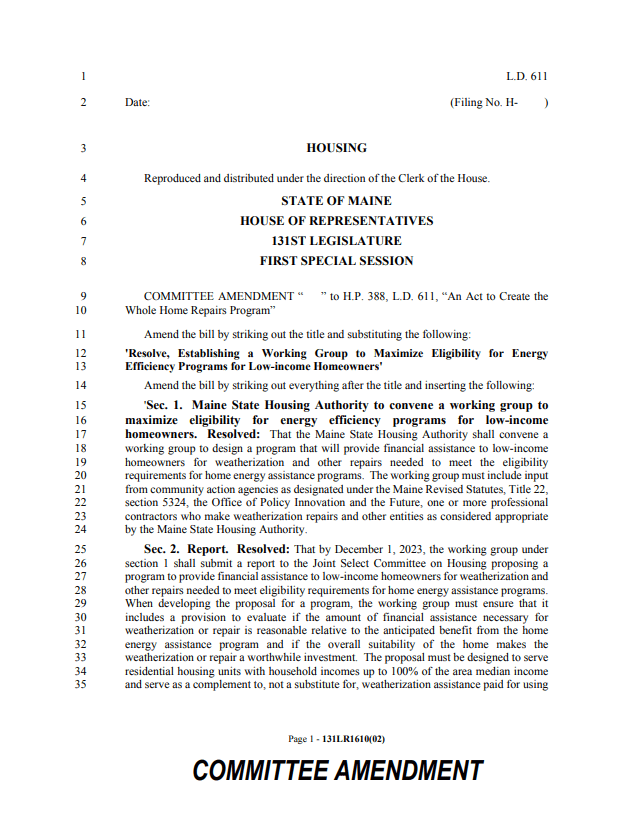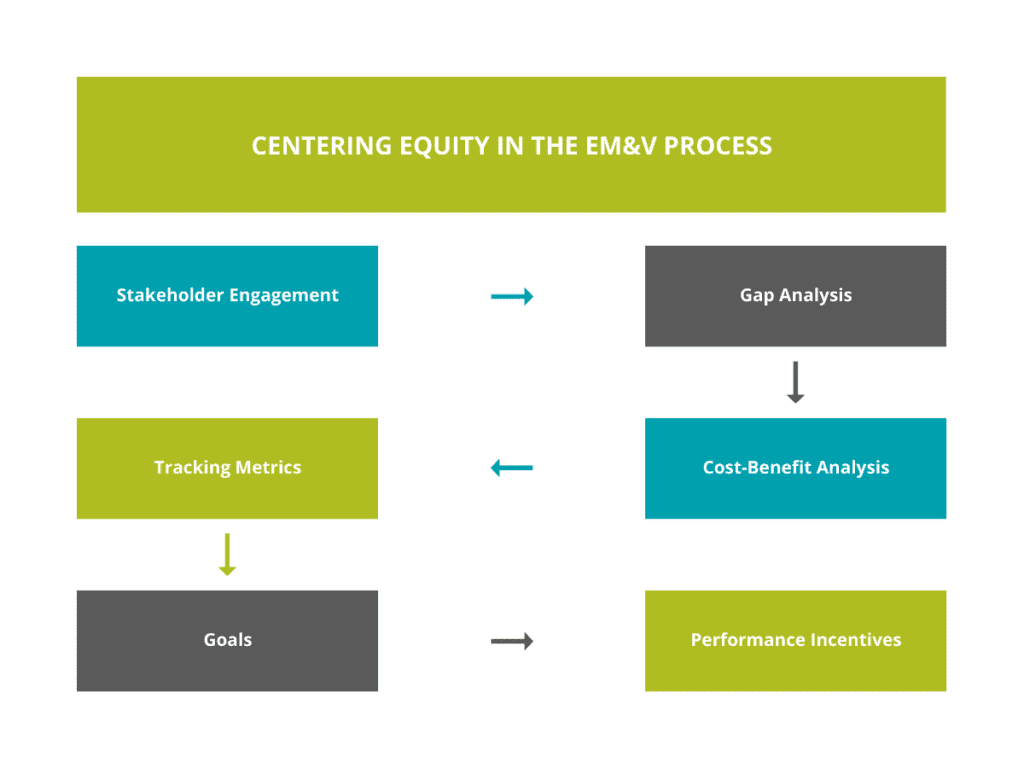Aug 9, 2023
Maine Legislature Acts to Tackle Low-Income Whole Home Repairs
By empowering marginalized communities, program administrators ensure that IRA funding efficiently tackles housing needs, including electrification.
By: Aditi Dalal

Implementing retrofits in low-income homes faces numerous issues, one of which is deferred upgrades because of health and safety issues or tube and wiring issues, that can cause program implementers to walk away from a home before a project even begins.
For example, often a resident cannot participate in energy efficiency programs if their house has lead and mold problems or other health-affecting issues, as it would be unsafe for contractors to install energy efficiency measures and/or the measures would render the home not safe to live in. If a home has mold issues and lacks ventilation, tightening the home would further exacerbate the mold problem and create a hazardous environment. Similarly, if the home has drafty windows and cannot contain heat, heat pumps would be ineffective at comfortably heating and cooling the home.
These types of barriers compound the burden on low-income households that can neither afford to remediate their homes nor qualify for assistance to relieve their energy burden. These residents are less likely to have funding for upfront costs, more likely to live in homes that will need significant investment, and are already overburdened by utility costs.
IRA Solutions For Retrofits in Low-Income Homes
The Inflation Reduction Act looks to address these problems with funding for states. Two programs especially, HOMES and HEEHRA, can help homeowners upgrade their homes. The HEEHRA rebate program allocates $4.5 billion to cover air sealing, ventilation, and wiring. This money can cover many pre-electrification retrofits that low-income homes need to qualify for other state programs that advance energy efficiency. The HOMES program, then, can be used for envelope measures and replacing electric appliances. This combination of funding can tackle many structural needs to improve the comfort of low-income homeowners.

While more direction on IRA funding should be available to states in July, some states are already jumping in to support their low-income residents through programs that address these concerns. Maine’s Act to Create the Whole Home Repairs Program was sent to the Governor’s office recently. It requires that the Maine State Housing Authority convene a working group to design a program that will provide financial assistance to low-income homeowners for weatherization and other repairs. The goal is to repair homes so they can be eligible for the home energy assistance programs. Program administrators must design programs to serve residential housing units with household incomes up to 100 percent of the area median income. Additionally, the program must complement, and not compete with, the weatherization assistance program which also uses federal funds.
This bill tackles the initial problems that residents may face, such as health and safety issues and structural repairs, before they can apply for energy efficiency programs.
Philadelphia also runs a program called Built to Last which assists low-income homeowners by creating a one-stop-shop for all home needs. The programs help by enrolling them in incentive programs, evaluating their needs, and coordinating service delivery and funding. The one-stop-shop method creates a clear approach, with assistance to help homeowners navigate their needs and take care of them to ensure the house is free from health and safety concerns, is ready for structural upgrades, and is retrofitted for energy efficiency.
States should design these pre-weatherization programs with equity in mind to ensure that they are targeting the needs of the consumer first. As Angie Bivens from Franklin Energy stated recently at the NEEP Summit, energy efficiency and heat pumps are not always the biggest concern for low-income homeowners. They often have other, more pressing issues like pollution from fossil fuel burning, risks of extreme weather and rapid sea level rise, mold, lead paint, and so on. Therefore, before states design programs that are meant to remediate homes, they must create a robust stakeholder engagement process to learn what problems to tackle first.
Metrics Can Ground the Process

To help states in these efforts, NEEP published the Centering Equity Metrics Report which describes steps that states can take to ensure they are serving low-income and other marginalized groups effectively. The first step in that process is creating a meaningful stakeholder engagement process. Within the process, marginalized groups and historically excluded communities should be the center of the program and their voices should have a direct impact on design. Partnering with these groups can help identify key stakeholders that will be affected by the programs and empower them to influence their design. While doing this, program administrators should compensate stakeholders for their time so that the process does not further burden them. By doing this, states ensure that they are tackling the needs of the community without inadvertently adopting any additional hurdles that may arise if the input were not there.
A meaningful stakeholder engagement process will enable states to create or redesign programs with IRA funding that have a long-lasting impact on the comfort and efficiency of their homes. By empowering marginalized communities, program administrators ensure that IRA funding efficiently tackles housing needs, including electrification.
This article was originally published in the NEEP blog and is republished with permission.





